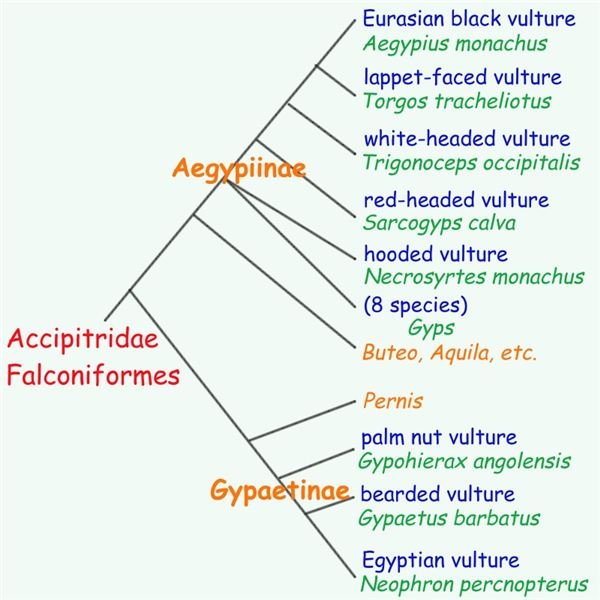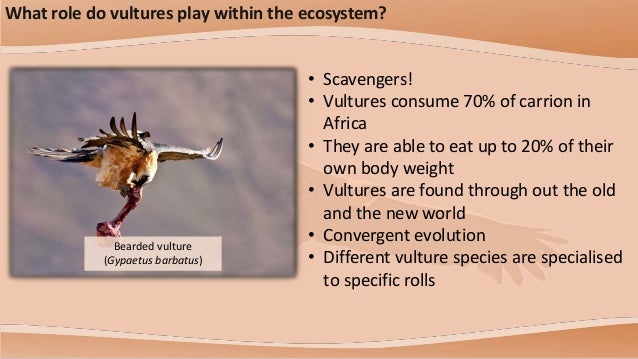Post by brobear on Nov 12, 2019 10:29:51 GMT
royalsocietypublishing.org/doi/abs/10.1098/rstb.1995.0150
Evolutionary history of New and Old World vultures inferred from nucleotide sequences of the mitochondrial cytochrome b gene.
The phylogeny of 11 species of Old World vultures (Aves: Accipitriformes, Aegypiinae), three species of New World vultures (Cathartidae) and their nearest relatives within and outside the order Accipitriformes was investigated based on 1026 nucleotides of the mitochondrial cytochrome b gene. The data support the contention that New World vultures are not birds of prey, but phylogenetic information was insufficient to identify whether they are closer to storks (Ciconiidae) or to Accipitriformes. Four species of Gyps are all closely related and probably speciated within the Pleistocene. Molecular data do not support the split of ‘ white-backed ’ vultures from Gyps in a separate genus Pseudogyps. The monotypic genera of large, heavy-billed vultures, Aegypius, Torgos, Trigonoceps and Sarcogyps, are of monophyletic origin. We propose to merge Torgos with Aegypius, but retain Trigonoceps and Sarcogyps as separate genera, Sarcogyps being clearly the most primitive of the four. All four, together with Gyps and form a monophyletic subfamily or ‘core group’, to which the subfamily Aegypiinae should be restricted. This group shares a more recent common ancestor with several non-vulture genera of Accipitrids, among them Buteo, Aquila, Haliaeetus and Circaetus, than it does with the two aberrent vultures Gypaetus barbatus and Neophron percnopterus. The last two are much more primitive; they seem to be each other’s sister species and are closer to Pernis than to other Accipitrids. We propose separating Gypaetus and Neophron in the subfamily Gypaetinae. If the cytochrome b gene tree accurately reflects vulture phylogeny, Old World vultures are polyphyletic with the Aegypius—Gyps clade having evolved convergently to the more ancient Gypaetus and Neophron vultures. Polyphyly of Old World vultures, although in conflict with the DNA-DNA hybridization phylogeny of Sibley & Ahlquist (1990), is well supported by molecular, karyotypic, morphological and other phenotypic evidence (behaviour, voice) indicating fundamental differences between the two evolutionary lines.
Evolutionary history of New and Old World vultures inferred from nucleotide sequences of the mitochondrial cytochrome b gene.
The phylogeny of 11 species of Old World vultures (Aves: Accipitriformes, Aegypiinae), three species of New World vultures (Cathartidae) and their nearest relatives within and outside the order Accipitriformes was investigated based on 1026 nucleotides of the mitochondrial cytochrome b gene. The data support the contention that New World vultures are not birds of prey, but phylogenetic information was insufficient to identify whether they are closer to storks (Ciconiidae) or to Accipitriformes. Four species of Gyps are all closely related and probably speciated within the Pleistocene. Molecular data do not support the split of ‘ white-backed ’ vultures from Gyps in a separate genus Pseudogyps. The monotypic genera of large, heavy-billed vultures, Aegypius, Torgos, Trigonoceps and Sarcogyps, are of monophyletic origin. We propose to merge Torgos with Aegypius, but retain Trigonoceps and Sarcogyps as separate genera, Sarcogyps being clearly the most primitive of the four. All four, together with Gyps and form a monophyletic subfamily or ‘core group’, to which the subfamily Aegypiinae should be restricted. This group shares a more recent common ancestor with several non-vulture genera of Accipitrids, among them Buteo, Aquila, Haliaeetus and Circaetus, than it does with the two aberrent vultures Gypaetus barbatus and Neophron percnopterus. The last two are much more primitive; they seem to be each other’s sister species and are closer to Pernis than to other Accipitrids. We propose separating Gypaetus and Neophron in the subfamily Gypaetinae. If the cytochrome b gene tree accurately reflects vulture phylogeny, Old World vultures are polyphyletic with the Aegypius—Gyps clade having evolved convergently to the more ancient Gypaetus and Neophron vultures. Polyphyly of Old World vultures, although in conflict with the DNA-DNA hybridization phylogeny of Sibley & Ahlquist (1990), is well supported by molecular, karyotypic, morphological and other phenotypic evidence (behaviour, voice) indicating fundamental differences between the two evolutionary lines.




